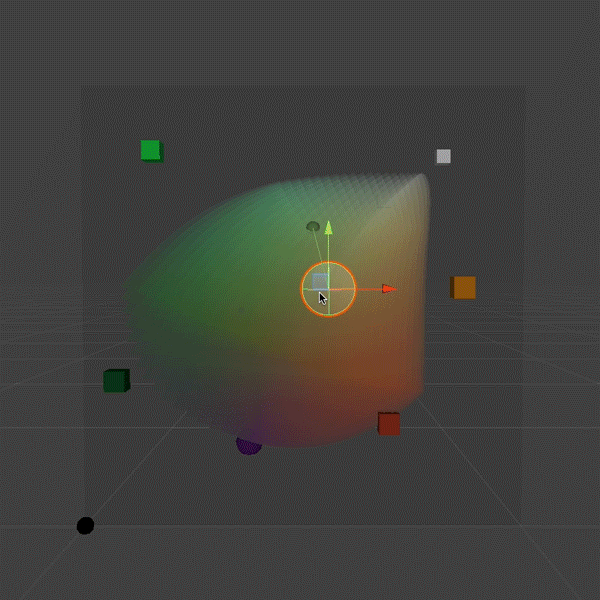Big Wet Pixels 5 from Cassidy Curtis on Vimeo.
Bigger, wetter, more pixelated! Playing with different strategies for sub-pixel brushstroke planning. There are so many possibilities…Tag Archives: simulation
Big Wet Pixels 4
Big Wet Pixels 4 from Cassidy Curtis on Vimeo.
Continuing to explore grids of big wet pixels. This one could even be considered to fit today’s Genuary prompt, “8×8”, if you squint at it. I’m getting to the point with Unity and C# where it’s starting to feel less like work, and more like play. More to come soon.
Big Wet Pixels 3
Still exploring big wet pixels (originally inspired by the #genuary4 prompt) using my watercolor simulation in Unity. Now the pixels are actually pixels: given a random selection of pigments and paper, they try their best to match the color coming in through my webcam. Lovely glitches ensue.
To get this working, I had to go back and solve an old problem that’s bothered me for decades: given an arbitrary set of three pigments and paper, what combination of pigment densities will produce the closest match for any given RGB color? This is non-trivial, because the gamut described by three Kubelka-Munk pigments is non-linear, not necessarily convex, and might even not be an embedding! In our 1997 paper we addressed that problem in a really crude way, which I was never very happy with: quantize the pigment densities into bins, and find the nearest bin in RGB space using a 3d-tree search. So it gave me great satisfaction last weekend when I implemented a continuous solution, using gradient descent.

The curved RGB color gamut described by a trio of semi-opaque white, amber and green pigments on purple paper. The white sphere represents the RGB color we’d like to match. A smaller, colored sphere represents the closest approximation that can be produced within the color gamut. A thin, meandering line shows the path taken from the middle of the gamut via gradient descent.
Impossible Paint: pigment studies 2
Now with randomized physical properties: staining, deposition, specific weight, granulation. This is starting to do things I don’t understand, which is always a good thing.
Impossible pigments for impossible paint
To make impossible paint, you need impossible pigments.
Genuary 2023: Impossible Paint
I love to tinker with code that makes pictures. Most of that tinkering happens in private, often because it’s for a project that’s still under wraps. But I so enjoy watching the process and progress of generative artists who post their work online, and I’ve always thought it would be fun to share my own stuff that way. So when I heard about Genuary, the pull was too strong to resist.
Here’s a snapshot of some work in progress, using a realtime watercolor simulator I’ve been writing in Unity. Some thoughts on what I’m doing here: it turns out I’m not super interested in mimicking reality. But I get really excited about the qualia of real materials, because they kick back at you in such wonderful and unexpected ways. What I seem to be after is a sort of caricature of those phenomena: I want it to give me those feelings, and if it bends the laws of physics, so much the better. Thus, Impossible Paint.
